Idlis a soft, light, fluffy steamed savoury vegetarian rice cake recipe.
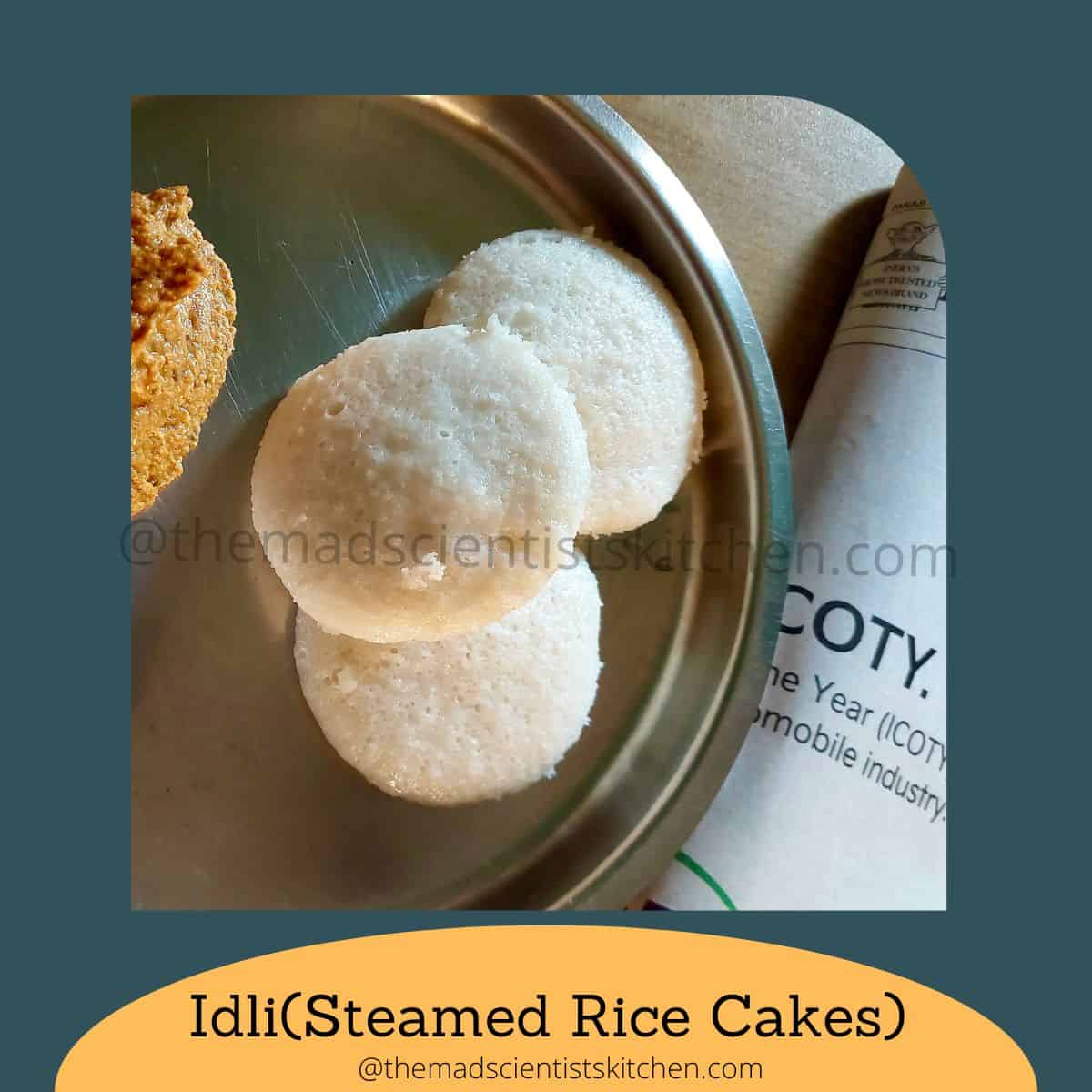
Idli is vegan and gluten-free and is a popular healthy South Indian dish. It is served with a steaming bowl of sambhar, a spicy chutney, and a pat of white butter. To round off the meal, you can even add a steaming cup of strong-filter coffee. Do I draw a mouth-watering picture of a South Indian breakfast?
Here, I share my foolproof recipe for making the best idlis. Many of my friends have used this recipe to get wonderful results.
Idli (also idly) is a healthy snack. So it is not a wonder that It is popular not just in India but also outside India.
The batter for idly is ground and fermented from scratch. It is made from rice or idli rava and lentils.
Some of our favourite idlis are Butter Idli Recipe and spongy Quinoa Idli for a Healthy Breakfast. Try Instant Poha Idlis, Spicy Corn and cabbage rava idlis, and instant ragi idli | ragi recipes when you are in a hurry.
If your kid is not happy with Idlis in their tiffin, try some Maledi Undi they make an excellent change.
Contents:
- Idli(Steamed Rice Cakes) and me
- Why MSK Idly recipe
- How to make Idli(Steamed Rice Cakes) Recipe
- For Your Questions
- Some of our favourite Idli Recipes
- Recipe card
- Pin for later
Hello, and welcome! I am known as The Mad Scientist’s Kitchen, reinventing the foodie in you!
Tired of choosing between tasty or healthy meals? No more! Here at the Mad Scientist’s Kitchen, I experiment with flavours and cuisines that are as nutritional as they are delicious.
Join me in my lab as we cook up some treats! You can stay up-to-date with my latest culinary adventures by subscribing to my newsletter. No scam, no spam, just the clink of my pots and pans!
I will love you to follow me on:
Idli(Steamed Rice Cakes) and me
I make idli and its variations regularly, for they are gut-friendly, too. From fermented to instant ones, I have tried them all!
I posted this old idli recipe on June 19, 2014. I am now redoing it with stepwise pictures. Later, I will add a video, too. I am sharing this as I join my old friends from the Blogging Marathon in the 143rd edition.
Why MSK Idly recipe
Make this recipe as
- Simple
- Filling
- Healthy
- Gut friendly
- Vegan
- Gluten-free
- Protein-rich
How to make Idli(Steamed Rice Cakes) Recipe
These are the ingredients you will need. For quantities please check the recipe card.
Ingredients:
- Black gram lentil or Udid dal
- Rice or idli rava
- Fenugreek seeds
- Salt
- Water
- Oil
- Beaten rice, sago or cooked rice (optional)
Method:
Making idlis(or dosa) can be divided into these steps
- Soaking the ingredients
- Grinding
- Fermenting
- Steaming the idli
Soaking the ingredients
- Start by soaking 3 parts carbohydrates (rice) and one part protein (de-husked black gram). Add a teaspoon of fenugreek seeds for flavour and spongy idlis.
- The black gram/Urid dal and fenugreek/methi are soaked together.
- If you plan to use sago in your batter, soak it now in another bowl. The beaten rice can be soaked just before grinding.
- But the rice needs to be soaked separately.
- Soaking time is usually 6-8 hours, but in a household like mine, it remains there the whole morning.
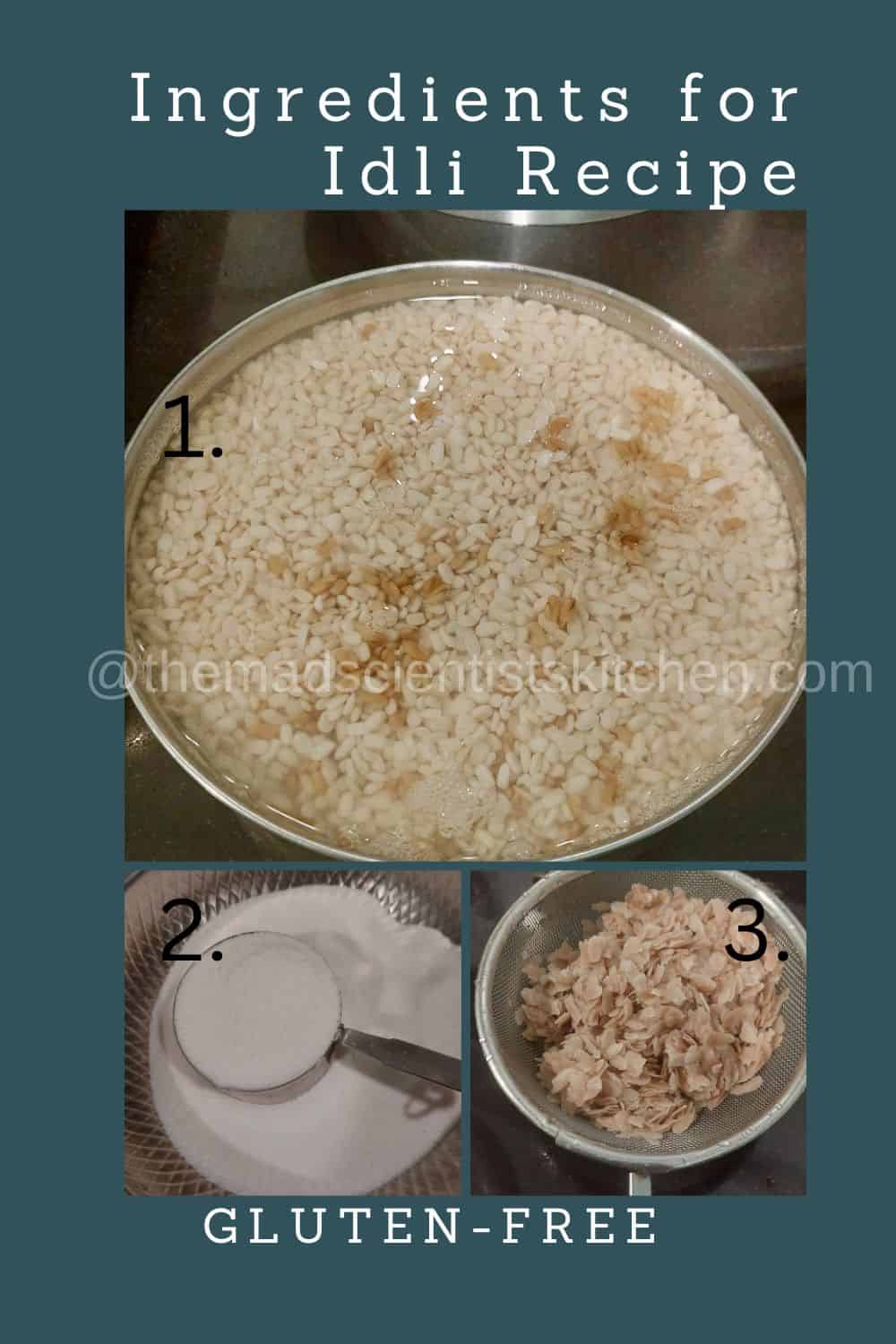
Grinding
- In the evening, I grind the soaked lentils finely with very little water. If you plan to use soaked sago, soaked beaten rice, or cooked rice, add it to the lentils while grinding. Grind the lentils first, as they are sticky.
- If you are using rice, grind it coarse. For the idli rava, I just rinse and decant it.
- Traditionally, batter was ground using a stone grinder. Thank god for electric blenders and electric wet grinders!
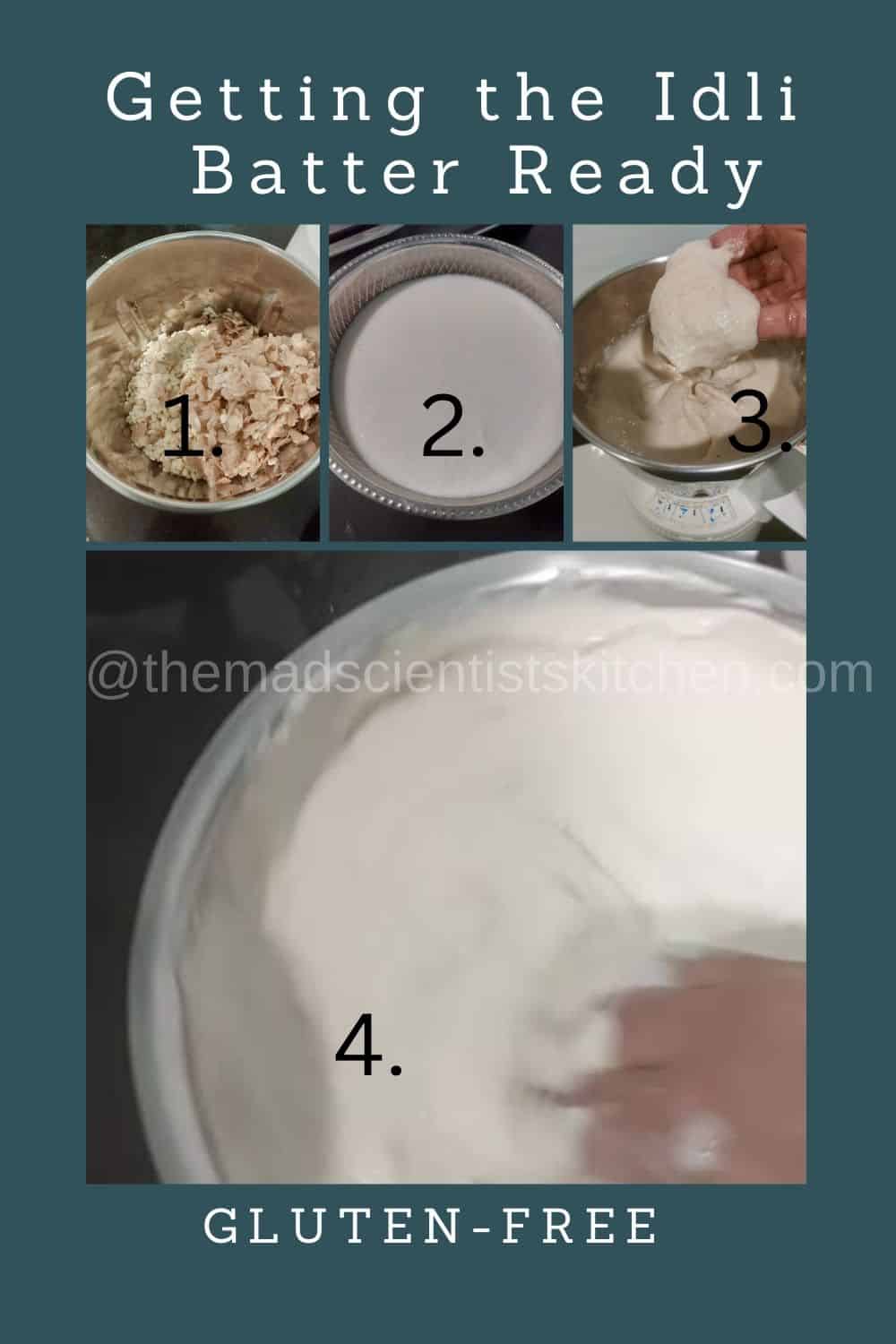
How does the batter ferment?
- Now that the batter for the rice and lentils is ready, you need to mix them well. Use a big vessel and set it aside for fermentation.
- Why a big vessel? Because the batter ferments and rises, and needs space. (Unless you plan to spend the morning cleaning up batter running all over the place).
- Fermentation is the process by which microorganisms in the food convert starch to alcohol or organic acids.
- The fermentation process makes the idli batter acidic. Does this explain why batter left out for a long time tastes sour?
- Also, those bubbles you see in the batter are carbon dioxide released. Fermentation is important because the starch is broken down, making it easier for your body to metabolise the food.
- For soft, fluffy idlis, we need the batter to ferment.
- Unless the batter doubles or triples and you see tiny bubbles in the batter, do not attempt making the idlis. I prefer to go by the nose; I look for a sour fermented aroma.
How do I make the idli?
- If, like me, you grind your batter in the evening/night, it should be fermented by morning.
- You will know because your batter will have risen well, and you will smell slightly sour. Run your ladle through the mixture, then add salt. Mix well.
- Is the batter dropping consistency? Less water will make your idlis dense. Add a little water at a time to adjust the batter consistency.
- Get your steamer ready. I use the pressure cooker without the whistle/valve. Add about 2 cups water and set it on the stove to heat. Meanwhile, take the idli stand/ idly tree/idli tray.
- Grease the shallow moulds and add the batter. Do not fill the mould to the brim. By now, the water in the cooker must be boiling. Transfer the idli stand to the cooker. Close the lid and let the idlis steam for about 12-15 minutes.
- After 12-15 minutes, remove the stand from the cooker and let the idlis cool for about 10 minutes. Then, remove the idlis and put them in a container.
- Traditionally, leaves or cloth were used to steam the idli. Now, you can use a stovetop steamer, a microwave, or even an electric one.
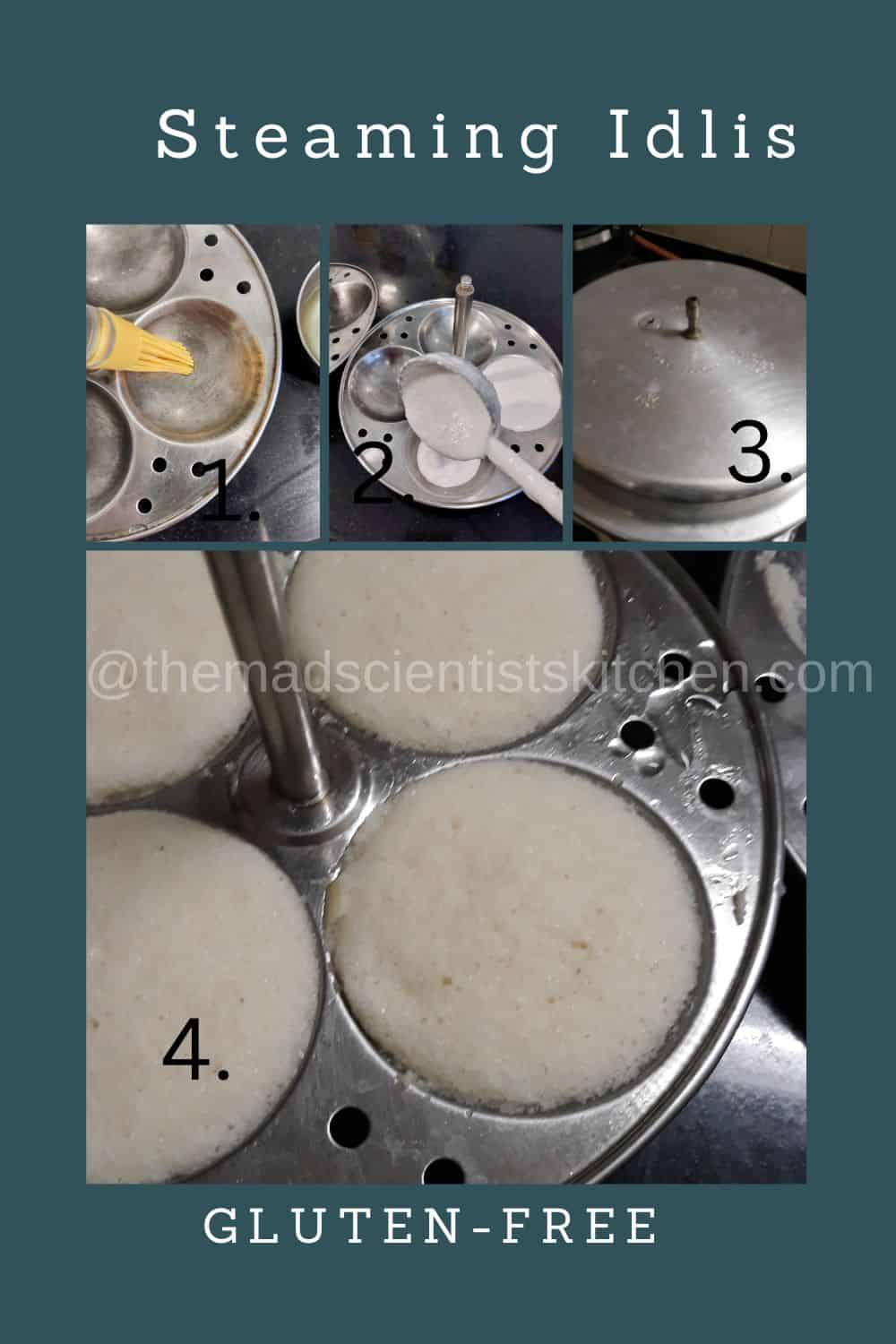
Substitutes:
- Traditionally, idli rice, parboiled rice, is used for making idlis and dosas. Since I cannot source idli rice here, I use short-grained rice—regular everyday rice like Sona Masuri or even Gai Kolum. The method you follow is the same.
- There are times when I use Idli Rava/Rawa or cream of rice, which I just rinse. This fine rava must be washed and decanted before adding your ground lentil batter. You can skip the rice soaking by using rice rava or idli rava.
- The lentils used are whole black gram that has been de-husked. In place of split and dehusked black gram, we call it Urid dal.
Variations:
- Idli, like most Indian specialities, has a huge bunch of variations you can try out.
- You can also add veggies like beans, carrots, and corn. Chopped-up green chillies can add an extra punch.
- You can use sugar and coconut to make the idlis sweet.
- The Goan Sanna is another sweet option. In this, coconut and palm jaggery are added.
- You can even create idli Upma with leftover idlis. Cut them up or crush them and then sauté.
- You can even prepare dahi idlis by combining curd and idlis and then tempering the dish.
- Many fusion idli snacks are now available, such as idly Manchurian, idly fry, chilly idly, and many other variations.
Equipment:
You will need
- Bowls to soak and store the ground mixture
- To grind, use one of these
- manual stone grinder
- An electric wet grinder or
- The mixer grinder
- To Steam, use any one of these
- An idli steamer
- Pressure cooker without the whistle/valve
- Microwave steamer
- Electric steamer
How to serve:
- Idlis are bland and need a condiment. Here is what you can serve with idli chutney: sambhar, Chutney Podi or chutney pudi, and gunpowder.
- Chutneys Coconut Coriander Chutney Recipe, Ridge Gourd Chutney, Ivy Gourd Chutney, Kathiyawadi Garlic Chutney| Lasun Chutney|Condiments.
- Sambhar
- Podi like Karnataka Style Chatni Pudi, Gun Powder Chutney Recipe, Sunflower Seed and Garlic Chutney, Drumstick Leaves Chutney Powder, and oil
- Have you tried serving idlis with clarified butter? Tastes amazing!
How to store:
- The idli batter can be made in bulk and stored in the fridge. I store it for up to four days, during which time I pour the amount of batter needed into a smaller bowl and return the bulk to the fridge.
- Do you want to store prepared idlis in the fridge for a maximum of 3 days? I do not store them beyond that for the simple reason that we finish them.
- The prepared idlis taste best when fresh, but if they are leftover, there are no issues. I leave them on the table overnight. In the morning, we have either fried idli, idli chilli fry, idli bites, or Manchurian.
For Your Questions
Protips:
- Use fresh urad dal; older urid dal makes the idlis dense.
- For sof,t fluffy idlis, for every cup or 240 grams of lentils, add (check the FAQ below)
- ¼ cup of beaten rice(soaked) or
- 2 tablespoon of sago(soaked) or
- ¼ cup of leftover cooked rice while grinding the urid dal.
- I have used Idli Rava in my pictures, but you can use regular rice too.
- Though the recommended proportions for rice and dal are a 3:1 or 2:1 ratio works well too. I use this many times as we want fewer carbs in our diet.
- Do not make your idlis unless the batter has fermented well ( for tips, check the FAQ below).
- Is your batter consistency right? It has to be of dropping consistency; too little water means dense idlis.
- Line the mould with a damp muslin cloth to steam the idlis for soft idlis.
Frequently Asked Questions:
-
I am trying to reduce weight can I eat Idli?
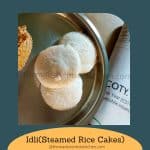
Yes, you can. idli is one of the most healthy Indian snacks because it is non-greasy. Since the oil used in making the idlis is minimum the calories are relatively low.
In case you are trying to lose weight remember rice is a carbohydrate. Reduce the rice the rice and dal proportion can be 2:1, try it these are great idlis.
Replace that with another healthy grain like quinoa, quinoa idlis are a favourite in my home. Add vegetables to the batter too. -
Are Idlis are good for digestion and gut health?
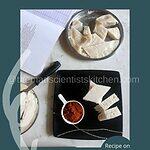
Fermented foods are easy to digest hence Idlis are easy to digest.
-
How to make Soft Idli?
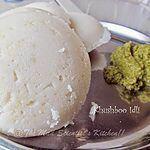
To make idli you soak and grind the ingredients then let them ferment. The proportions are very important 3:1 or 2:1 of rice to lentils.
Add the soaked sago, soaked and drained beaten rice or cooked rice if using for softer idlis. A fine ground batter ferments well.
Is the batter dropping consistency? Lesser water will make your idlis dense add little water at a time to adjust the batter consistency. -
Tips to encourage fermenting of your idli dosa batter
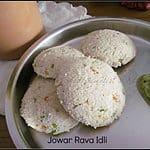
In warm climates, fermentation is not a problem. But in winter or if you live in cold places you will need to control the temperature.
Be patient your fermentation time is longer even 24 hours. Here is a summary of how to go about the fermentation of your batter.
Keep the batter in a warm place say near the gas, oven with the lights switched on.
My sister-in-law who lives in a very cold country preheats her oven to about 80C for about 10 minutes. Switches off the oven and then keeps her batter in the oven. It works!
Adding some sugar will help the batter to ferment. However salt will inhibit the fermentation. So in winter add sugar and in summer add salt.
After all these attempts if your batter refuses to cooperate add yeast or baking soda. Instant or activated yeast is also fine. Whatever yeast you use add ¼ to ½ teaspoon of yeast dissolved in 2 to 3 teaspoons of warm water. Let the batter stand for about 45 minutes before you steam the idli.
I will suggest that you take out the amount of batter you require before adding the yeast. You will need to use all the batter immediately or refrigerate the batter or it gets sour.
Add ¼ to ½ teaspoon baking soda and then steam your idli. -
What is the difference between Idli Batter & Dosa Batter?
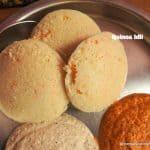
Idli and dosa both use the same ingredients lentils and rice. The basic difference is in the proportions and the thickness. The idli batter is thicker than the dosa batter which is of spreadable consistency.
For idli batter the ratio of rice and lentils is 3:1. But I have used 2:1 here in this batter and I get wonderfully soft idlis. Some recipes use a higher proportion of rice but this is what I prefer.
For dosa, the ratio that I use is 3:1 for rice and lentils. With the idli batter of 2:1 ratio, I make dosa too. I generally make dosa on the second day and uttapam on the third. In the past, I have used the same idli batter to make dosa on the same day.
Some of our favourite Idli Recipes
You may also like


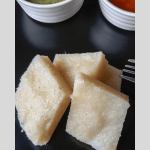
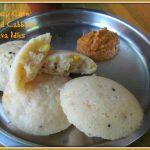
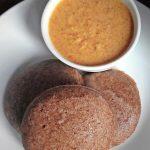

Summary
Idli is a healthy, gut-friendly breakfast option that we choose over any other dish. The carbs and lentils give me my necessary sugars, so I am satiated for a longer period.
Recipe card
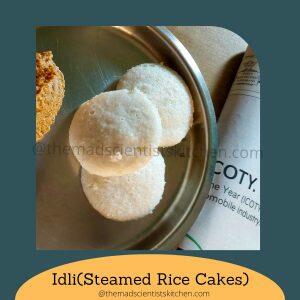
How to make Idli (Steamed Rice Cakes)
Equipment
- 4 Bowls to soak and store the ground mixture
- 1 Steamer
- 1 idli tree
- 1 Silicone Brush for brushing
Ingredients
- 1 cup urad dal
- 2 cups idli rava
- 2 teaspoon methi seeds fenugreek
- ¼ cup beaten rice optional
Instructions
- Wash and soak the urid dal with the methi for 4-8 hours.
- Measure the idli rava out in a big vessel, the one in which you plan to ferment the batter and add water.
- Stir the rava and see to it that the water is at least 1 inch above the rava.
- Let it stand for 15-20 minutes. Drain the water. Repeat the procedure 2 more times.
- Drain all the water and keep ready for the urid dal batter.
- Meanwhile, grind the urid dal and soaked beaten rice (if using) to a fine paste using little water if needed. You can grind in the blender or in grinding stone.
- Remove the urid dal and mix it well with the idli rava.
- Set aside to ferment overnight.
- In the morning you will see that your batter has fermented well. Stir it. Add salt and mix well.
- I have used the Idli tree and greased the moulds. Add the batter in the moulds.
- You can use either the idli cooker or your pressure cooker without the vent or the weight.
- After 12-15 minutes remove the idli from the cooker and let them cool down a bit.
- Remove from the mould.
- Serve with chutney and sambhar.
Notes
Protips
- Use fresh urid dal older urid dal makes the idli dense.
- I have used idli Rava in my video here but you can use regular rice too.
- For soft fluffy idlis add ¼ cup of beaten rice(soaked), 2 tablespoon of sago(soaked) or ¼ cup of leftover cooked rice while grinding the urid dal.
- Do not make your idlis unless the batter has risen.
- Too little water means dense idlis.
- Use a damp muslin cloth to steam the idlis for soft idlis.
- Though the recommended proportions for rice and dal is 3:1 a 2:1 ratio works well too. I use this many times when we want lesser carbs in our diet.
FAQ
- I am trying to reduce weight can I eat Idli?
- Are Idlis are good for digestion and gut health?
- How to make Soft Idli?
Nutritional Disclaimer: I am not a certified nutritionist and make no claims to the contrary. Please check with your nutritionist for your dietary needs and restrictions. Ultimately you are responsible for your decisions.

Pin for later



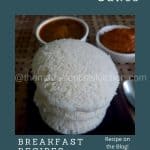

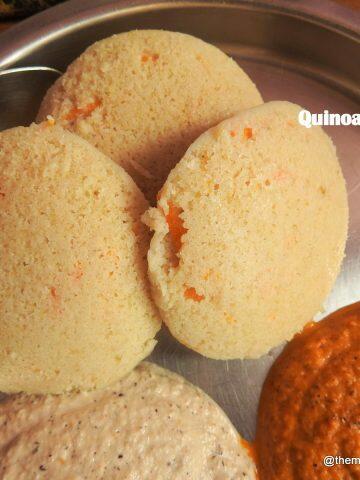
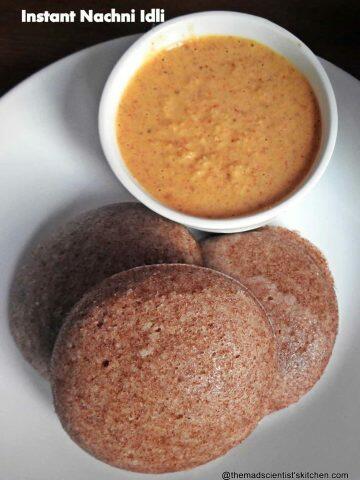
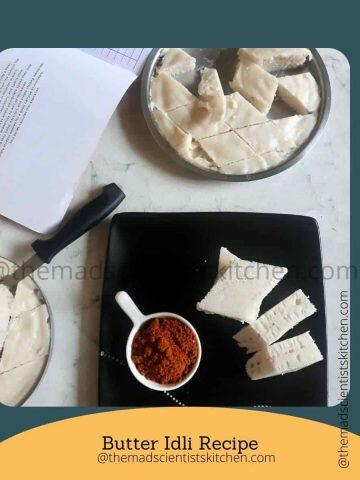
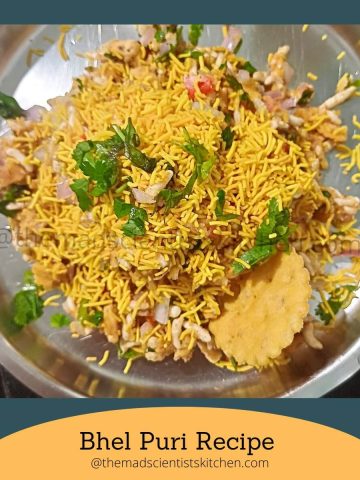
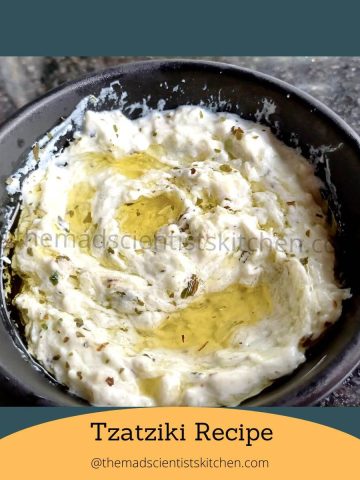
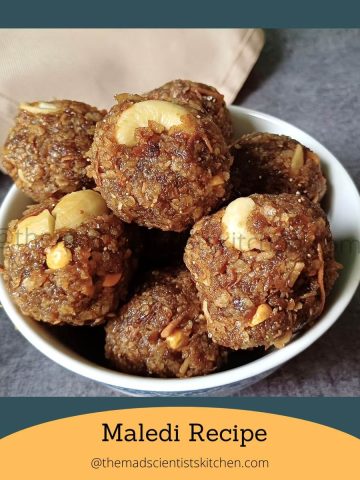
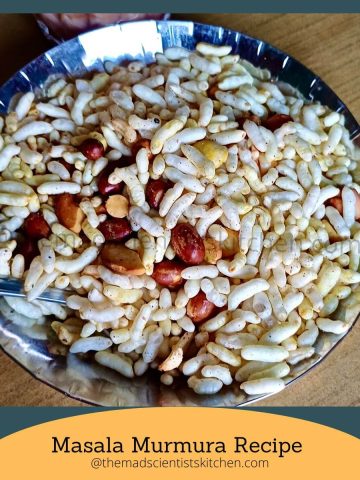
Sandhya Ramakrishnan says
How sometimes we forget to blog the basic recipes. This is such a must for South Indians and Idli rava does save lot of time. Lovely post Archana!
Priya Suresh says
Our favourite breakfast..I can have it everyday without fuss.
Vaishali says
Awesome ! The idlis make such a hearty and guilt free breakfast . I love these soft pillowy idlis , dunked into that sambhar, or even those podi idlis drenched in ghee.
But more than anything I love the variety of idlis you have in your treasure .
ArchanaPotdar says
😀 Thanks, Vaishali.
Srivalli says
Such a wonderful post Archana, makes one feel how it is important to learn the basic recipes and yet it is so hard to get it right all the time. I am sure this post will help us.
ArchanaPotdar says
😀 so true, Valli.
Srividhya Gopalakrishnan says
Idli is staple and I can't imagine we weekly menu with idli or dosa. Love the detailed post on making the batter and steaming them.
ArchanaPotdar says
Thank you.
Priya Srinivasan says
Fluffy idly and a delish sambar, an wholesome and hearty dish anytime. Love the detailed post archana, great tips to get the humble idli right!!
ArchanaPotdar says
😀
Seema Sriram says
It is a collection of fantastic idli recipes here. I love classic idli anytime so this certainly is my go-to option for breakfast lunch or even dinner.
ArchanaPotdar says
Spoken like a Indian or should I say South Indian.
Nayna Janabar says
We love idlis , it’s a simple yet tasty dish that is so versatile. I love the fluffy texture you have achieved with your idlis.
ArchanaPotdar says
Thanks, Nayna.
Radha says
I am a idli lover. This is a my heaven and would love to have any time and everyday. I love the addition of poha. Great recipe.